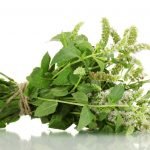How to Safely Love the Sun
Docere
Stacey Shillington, ND
Our bodies are designed to thrive in the sun, and yet we are living in a sun-deprived society. In fact, over 40% of the US population is deficient in vitamin D, otherwise known as the “sunshine vitamin.”1 This number is disturbing considering that the sun influences so much of our health and happiness. The sun, however, also poses some real risks. Skin cancer rates are rising dramatically, prompting us to hide from the sun and slather on sunscreen. Yet, despite our best efforts, we are falling victim to ultraviolet (UV) radiation at an increasing rate. What are we doing wrong, and how can we remedy this situation?
Sun Benefits
First, let’s explore the ways that the sun benefits the human body:
- Vitamin D3 production2: UVB rays from the sun react with cholesterol in the skin to produce vitamin D3 sulfate, a water-soluble vitamin that travels freely throughout the body and interacts with practically every cell. A vitamin D3 deficiency can contribute to conditions such as: cancer, heart disease, type 2 diabetes mellitus, hypertension, obesity, cognitive impairment, Parkinson’s disease, multiple sclerosis, fractures and falls, influenza, age-related macular degeneration, poor immune function, and depression. And that’s not even everything!
- Nitric oxide production3: When the skin is exposed to UV rays, nitric oxide is released from dermal storage sites in the skin. Nitric oxide helps prevent hypertension and metabolic dysfunction, and promotes cardiovascular health.
- Increased ATP production4: The sun literally recharges our batteries. Recent research has revealed that mitochondria can capture light and synthesize ATP when mixed with a light-capturing metabolite of chlorophyll. This means that if you eat your greens (which contain chlorophyll), you can produce energy from the sun.
- Serotonin production5: The sun produces serotonin through the skin. Serotonin is our feel-good neurotransmitter; without it we are prone to conditions such as depression and Seasonal Affective Disorder (SAD).
- Antimicrobial activity6: Vitamin D3 sulfate moves freely in the bloodstream, providing a healthy barrier that keeps out harmful bacteria and other microorganisms, such as fungi. The sun is a powerful cleanser. History is rampant with examples of heliotherapy to fight infection and disease. An example is Dr Auguste Rollier and his colleagues, who in the late 1800s used the sun and fresh air to cure many conditions, most notably tuberculosis.7
Sun Risks
As much as the sun is the most life-giving force in our environment, its risks cannot be debated. How does the sun harm the body?
- Aging: The sun ages the skin; research backs this up over and over again.8Fine lines, wrinkles, and hyperpigmentation are all a result of overindulging in the sun’s rays.
- Actinic keratosis: Along with age spots and moles, actinic keratoses are a direct result of UV radiation and may lead to squamous cell carcinoma.
- Basal and squamous cell carcinoma: Sun is the main risk factor for both types of skin cancer. Non-melanoma skin cancers increased by 300% between 1994 and 2010.9
- Melanoma: Although melanoma is a deadly form of skin cancer, its etiology is not as clear-cut as basal or squamous cell carcinoma. Research has shown that sunburns and intermittent sun exposure create more risk than heavy occupational exposure.10This means that the guy who gets burned at the beach once per year is at greater risk of melanoma than they guy who labors in the fields, under the sun, for decades. This may seem confusing and a bit paradoxical at first, but when you understand the role of melanin in the body, it actually makes sense. The role of melanin is explained below.
Other Factors at Play
How can the sun be so wonderful and yet so dangerous at the same time? Why is skin cancer increasing at such a rapid rate? Is the sun entirely to blame? The answer is no; there are other factors at play:
- The Standard American Diet (SAD): The SAD consists of lots of sugar, inflammatory fats, processed foods, trans fats, colorings and other additives, pesticides, and medications (such as antibiotics in beef). The bulk of the SAD diet is hardly fruits and vegetables, yet we need fresh fruits and vegetables to protect our skin from the sun. Research has shown that a whole-foods diet high in antioxidants prevents free radical-mediated DNA damage and tumor development11,12 and that pigment-rich plants actually boost the body’s ability to mitigate sun damage.13
- Chronic inflammation: Inflammation is at the heart of most chronic conditions, whether it is osteoarthritis, atherosclerosis, IBD, acne, lupus, or other autoimmune conditions. Research shows that inflammation, which is present in varying degrees in everyone, plays a critical role in skin carcinogenesis.14
- Vitamin D deficiency: I love a good paradox, and this is one of the best. Thousands of studies implicate vitamin D deficiency as a risk factor for cancer, and skin cancer is no exception. That’s right: vitamin D deficiency is implicated in skin cancer.15This is because natural vitamin D3 sulfate “becomes oxidized upon exposure to the high frequency rays in sunlight, thus acting as antioxidants to take the heat, so to speak.”16 In other words, vitamin D protects the body from the harmful effects of the sun. Researchers are unclear as to whether or not supplemental vitamin D3, which is fat-soluble, is available in the skin to perform this function. Thus, appropriate sun exposure may be important in the prevention of skin cancer.
- Sunscreen: This is a controversial subject at best, and although I do not think that long-term exposure to sunlight without protection is a good idea, it has to be done correctly. Here are some considerations:
- The sun’s rays emit both UVB and UVA radiation. Many sunscreens only block UVB rays and thus allow UVA rays to enter the skin. UVA rays, when uncoupled from UVB rays, can deeply penetrate the skin and damage DNA, which can potentially contribute to skin cancer.
- The Environmental Working Group has cautioned against several ingredients that are commonly used in sunscreens, most notably oxybenzone.17Reports claim that oxybenzone is not carcinogenic until it is exposed to sunlight, which is worrying at best. Although there is much contention surrounding this issue, it is well established that oxybenzone is a major contributor to coral reef damage throughout the world.
- Research published in the Cochrane Review in 2016 did not find any evidence for the effectiveness of daily sunscreen use for preventing basal cell or squamous cell carcinoma.18
- A study published in the British Journal of Dermatology in 2018 deemed that sunscreen is not a useful prevention measure against melanoma in the United States.19
For optimal sunscreen protection, use a non-nano form of zinc oxide that blocks and deflects both UVA and UVB rays, and avoid sunscreens containing oxybenzone and retinyl palmitate or other vitamin A derivatives.
Guidelines for Safe Sunning
So, what is a person to do? How do we love the sun, and let the sun love us? Following are my guidelines to take back our power and let the sunshine in – safely:
- Consume a diet consisting of 80% fruits and vegetables, to maximize the amount of antioxidants available to fight free radicals generated by UV radiation and to increase our internal SPF. Eat a rainbow of colors!
- Reduce inflammation in the body. Research has shown that an unbalanced microbiome is one of the main contributors to chronic inflammation in the body.20Heal the gut. Include plenty of omega-3 fatty acids in the diet, and reduce omega-6 fats, which promote inflammation. Support the liver and detoxify the body.
- Make real vitamin D (from the sun) responsibly. Start with a few minutes each day in the early spring, and gradually increase the time you spend in the sun each day. An app called D-Minder can help you calculate a safe amount of time to spend in the sun for making the appropriate amount of vitamin D. The best time is in the morning until solar noon. Under no circumstances should you allow your skin to burn. In addition to making vitamin D, this process will allow you to gradually produce melanin in your skin, otherwise known as a “tan.” Melanin production will protect you from the stronger UV rays during the summer months, as it absorbs and dissipates 99.9% of UV radiation.21This allows us to side-step the UV damage that can lead to skin cancer. This is why people that are chronically exposed to the sun are at a reduced risk of melanoma – their gradual accumulation of melanin protects them from UV radiation.
- While producing your natural vitamin D and melanin, use botanical oils to mitigate UV damage. Coconut oil, jojoba oil, sea buckthorn oil, and red raspberry seed oil naturally protect the skin from radiation damage.
- For prolonged exposure to the sun, use a natural zinc oxide sunscreen, or cover up. Organic, full-spectrum zinc oxide sunscreen blocks and reflects the UV radiation instead of absorbing the sun’s rays. It is also a more environmentally responsible choice than other types of sunscreens.
References:
- Forrest KY, Stuhldreher WL. Prevalence and correlates of vitamin D deficiency in US adults. Nutr Res. 2011;31(1):48-54.
- Nair R, Maseeh A. Vitamin D: The “sunshine” vitamin. J Pharmacol Pharmacother. 2012;3(2):118-126.
- Fleury N, Geldenhuys S, Gorman S. Sun Exposure and Its Effects on Human Health: Mechanisms through Which Sun Exposure Could Reduce the Risk of Developing Obesity and Cardiometabolic Dysfunction. Int J Environ Res Public Health. 2016;13(10). pii: E999.
- Xu C, Zhang J, Mihai DM, Washington I. Light-harvesting chlorophyll pigments enable mammalian mitochondria to capture photonic energy and produce ATP. J Cell Sci. 2014;127(Pt 2):388-399.
- Sansone RA, Sansone LA. Sunshine, serotonin, and skin: a partial explanation for seasonal patterns in psychopathology? Innov Clin Neurosci. 2013;10(7-8):20-24.
- Strott CA, Higashi Y. Cholesterol sulfate in human physiology: what’s it all about? J Lipid Res. 2003;44(7):1268-1278.
- Woloshyn TA. Patients rebuilt: Dr Auguste Rollier’s heliotherapeutic portraits, c.1903-1944. Med Humanit. 2013;39(1):38-46.
- Flament F, Bazin R, Laquieze S, et al. Effect of the sun on visible clinical signs of aging in Caucasian skin. Clin Cosmet Investig Dermatol. 2013;6:221-232.
- Nonmelanoma Skin Cancer Incidence Increases Dramatically. Sun & Skin News. 2010;27(2). Skin Cancer Foundation Web site. https://www.skincancer.org/publications/sun-and-skin-news/summer-2010-27-2/nonmelanoma-skin-cancer-incidence. Accessed April 20, 2018.
- Elwood JM, Jopson J. Melanoma and sun exposure: an overview of published studies. Int J Cancer. 1997;73(2):198-203.
- Katta R,Brown DN. Diet and Skin Cancer: The Potential Role of Dietary Antioxidants in Nonmelanoma Skin Cancer Prevention. J Skin Cancer. 2015;2015:893149.
- Godic A, Poljšak B,Adamic M, Dahmane R. The role of antioxidants in skin cancer prevention and treatment. Oxid Med Cell Longev. 2014;2014:860479.
- News Medical Life Sciences. Tomato Paste Helps Fight Sunburn and Wrinkles. April 29, 2008. Available at: https://www.news-medical.net/news/2008/04/29/37863.aspx. Accessed April 20, 2018.
- Maru GB, Gandhi K, Ramchandani A, Kumar G. The role of inflammation in skin cancer. Adv Exp Med Biol. 2014;816:437-469.
- Tang JY, Fu T, Lau C, et al. Vitamin D in cutaneous carcinogenesis: part I. J Am Acad Dermatol. 2012;67(5):803.e1-e12.
- Seneff Sulfur Deficiency: A Possible Contributing Factor in Obesity, Heart Diseas,e Alzheimer’s and Chronic Fatigue. July 2, 2011. The Weston A. Price Foundation. Available at: https://www.westonaprice.org/health-topics/abcs-of-nutrition/sulfur-deficiency/. Accessed May 20, 2018.
- Environmental Working Group. Imperfect Protection: EWG’s Analysis of UV Protection Offered by U.S. Sunscreens. Available at: https://www.ewg.org/sunscreen/report/imperfect-protection/. Accessed April 21, 2018.
- Sánchez G, Nova J, Rodriguez-Hernandez AE, et al. Sun protection for preventing basal cell and squamous cell skin cancers. Cochrane Database Syst Rev. 2016;7:CD011161.
- Grant WB. Widespread regular sunscreenapplication deemed not useful in the United States. Br J Dermatol. 2018 Apr 20. doi: 10.1111/bjd.16682. [Epub ahead of print]
- Koh JH, Kim WU. Dysregulation of gut microbiota and chronic inflammatory disease: from epithelial defense to host immunity. Exp Mol Med. 2017;49(5):e337.
- Hill HZ. Melanins in the photobiology of skin cancer and the radiobiology of melanomas. In: Wilson SH, ed. Cancer Biology and Biosynthesis. Boca Raton, FL: CRC Press; 1991: 31-53.
Image Copyright: <a href=’https://www.123rf.com/profile_flairmicro’>flairmicro / 123RF Stock Photo</a>
 Stacey Shillington, ND, has been practicing naturopathic medicine in Toronto, Canada, for over 10 years. Inspired by her own struggles with PCOS, her area of interest has always been skin care and hair loss. Dr Shillington is a graduate of McGill University and the Canadian College of Naturopathic Medicine. She is also a mother to 2 boys and is a dedicated yogi and meditator.
Stacey Shillington, ND, has been practicing naturopathic medicine in Toronto, Canada, for over 10 years. Inspired by her own struggles with PCOS, her area of interest has always been skin care and hair loss. Dr Shillington is a graduate of McGill University and the Canadian College of Naturopathic Medicine. She is also a mother to 2 boys and is a dedicated yogi and meditator.









